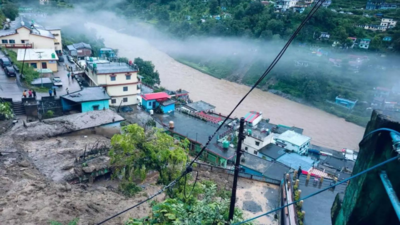Government defines timeline, responsibility for managing highway disasters | India News

NEW DELHI: In light of increasing incidents of natural disaster like cloudbursts and floods badly impacting highways and disrupting normal life, the govt has notified a detailed Disaster Management Plan (DMP) for the road and highway sector, specifying timelines for quick inspection and preparation of rehabilitation plan, for officials in the field as well as at headquarters. Financial powers have also been delegated for execution of these tasks.As per the DMP, the field officer or project head must swing into action within six hours of the occurrence of a disaster and monitor its impact on the national highway in question regularly, in close coordination with the district administration. They need to quickly inspect the site, assess the severity of damage and prepare a technical plan for restoration and repair. The official concerned will be delegated financial powers if the estimated cost of restoration or repair is within Rs 25 lakh per spot and within Rs 1 crore for all spots affected by the disaster.Similar responsibilities with timelines and financial powers to sanction work have been specified for higher-ups in all highway implementing agencies, as per the DMP. “There is no point in assigning responsibility without giving financial delegation when one has to make on-the-spot decisions for procurement and execution,” said an official.Since highways act as lifelines for economic activity, the DMP specifies that the agencies concerned must complete all tasks of assessing damage, completing post-event investigation and formulating a future strategy within one month, so that corrective action can be initiated expeditiously.The DMP also envisages setting up of a Disaster Management Division to be headed by a chief engineer or joint secretary level officer, to act as the ministry’s nodal division for coordination with ministries and departments of central and state govts. The division will also carry out studies and formulate plans on hazard risk vulnerability and capacity assessment as part of preparedness for any disaster.The plan, which covers both natural and man-made disasters, has also prescribed the strategy for dealing with transportation hazards, namely transport accidents involving dangerous goods and hazardous substances such as explosives and gases, and flammable and oxidising substances. It says that detailed operational guidelines for transportation of dangerous goods and hazardous substances will be prepared by the road safety division, in consultation with all stakeholders.Classifying the high number of road deaths as a man-made disaster, the DMP has laid the roadmap for reducing fatalities by 50% by 2030, with 2025 being the reference year for the purpose.





